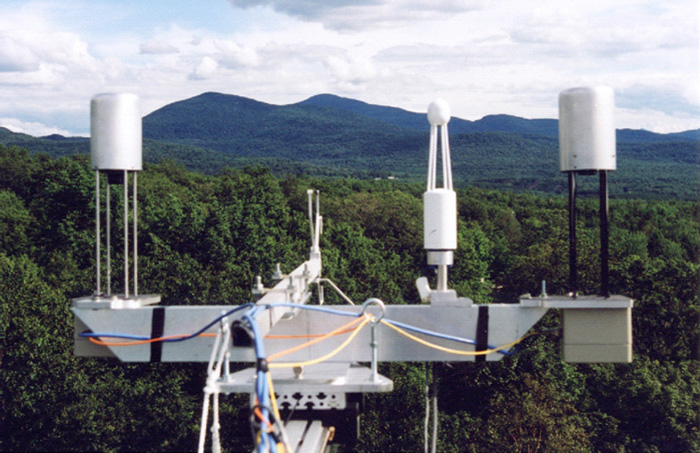A Diode Laser Sensor for High Precision CO2 and H2O Flux Measurements
Physical Sciences Inc. (PSI) develops a next generation, near-infrared tunable diode laser-based sensor for boundary layer flux measurements of greenhouse gas trace species.

R&D Opportunity
As the burden of CO2 in the atmosphere continues to increase, prediction of global climate change relies upon a detailed understanding of the exchanges of greenhouse gases with the terrestrial ecosystem and with the hydrosphere. To develop and validate improved climate models, national and international programs have called for the development of improved data sets characterizing surface-atmosphere dynamics. High quality measurements of sources and sinks are needed to quantify changes in the carbon cycle occurring in the terrestrial biosphere. These measurements are needed in studies of the bio- diversity of ecosystems, their response to changing environmental parameters, and their feed- backs to the processes involved in global climate change. To make these measurements and to develop the requisite data sets, new field sensors are needed to make these flux measurements with high precision.
Solution
PSI designed, fabricated, tested, and field-demonstrated a near-ir tunable diode laser absorption sensor (TDLAS). Based on robust, near-infrared tunable diode laser (TDL) optical technology, this sensor provides new measurement capabilities to the community. The sensor has a very small footprint, low power consumption, and is easily transported, setup, and maintained by a single technician. It is capable of unattended, extended field deployment. Its measurement capabilities include the ability to monitor several species, such as CO2 and H2O, simultaneously. The high selectivity provided by the near-IR diode laser probe offers the capability to monitor isotope fractionation, that is, both 12CO2 and 13CO2 can be measured for source apportionment.
Impact
Commercial applications of this technology span many fields and disciplines including environmental fence line monitoring of pollution, automotive emissions sensing, combustion diagnostics, isotopic speciation, and monitoring of many industrial processes. In particular, this technology development under DOE funding has led to an accurate monitor of freeze drying to improve product quality and process efficacy. PSI has delivered these sensors to over a dozen pharmaceutical facilities in Europe, Asia, and the US. This technology development has also led to the development of a spectroscopic instrument that is used on automotive engine test stands to better understand internal combustion processes in engines under development. Another variation of the sensor has been used in pharmaceutical spray drying operations resulting in several tens of millions of dollars in savings to a pharmaceutical company in drug process development. An oil services company has used the isotope speciation capability of the sensor to better understand the characteristics of drilling muds in oil exploration.
In summary, this program has contributed to more than $5 million in revenue from instrument sales and support.
Contact
B. David Green
green@psicorp.com
Related Links
Highlight Categories
Program: SC-BER



